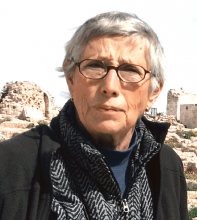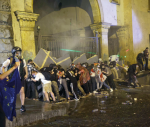You are here
Two unlike anniversaries, missed chances
Jan 27,2016 - Last updated at Jan 27,2016
“I participated in the January revolution,” Egyptians boasted on social media in the days before January 25, the fifth anniversary of the 18-day mass uprising that drove president Hosni Mubarak, at the helm for 30 years, from power and, thanks to satellite television, galvanised the world.
But while Tunisians celebrated the fifth anniversary of their successful revolt against President Zein Al Abideen Bin Ali, Egyptians were warned to stay off the streets and out of the squares where they had congregated during late January and early February 2011 with the goal of toppling Mubarak.
The reason for the diverse reactions is found in the different approaches to power adopted by the two most powerful political groups in these countries, both of them faith based.
Tunisia’s Ennahda not only won the 2011 election but also shared power and participated in the drafting of a secular constitution.
In 2014, Ennahda gave up power to a technocratic government, accepted defeat in the parliamentary elections and pledged to work with rivals. Ennahda played the democratic game and Tunisia benefitted.
Although Tunisia has faced serious security challenges since 2011 and Tunisians top the number of volunteers flocking to Daesh in Syria, the post-Ben Ali governments managed to stabilise the country and move forward.
Egypt’s Muslim Brotherhood, founded in 1929, promised not to monopolise power, but won a plurality in parliament and took the presidency.
The Brotherhood dominated the writing of a new constitution and engineered its adoption by referendum. It also appointed loyalists to positions in the bureaucracy and key institutions.
Repeatedly warned he must share authority with other political parties and movements, president Mohamed Morsi refused, at the instigation of the Brotherhood’s senior leaders.
He failed to address the needs and grievances of the populace, alienating the majority of Egyptians who in June 2013 revolted, prompting the military to remove him from office and establish an interim government.
Instead of admitting its mistakes and seeking reconciliation, the Brotherhood protested Morsi’s ouster by mounting mass sit ins at Rabaa Al Adawiya, in Cairo, and Al Nahda Square, in front of Cairo University’s campus in Giza.
Brotherhood supporters marched in the streets and clashed with the security forces and local residents. Brotherhood allies among militant fundamentalist groups, especially the Sinai-based Ansar Beit Al Maqdis — which had been carrying on a low-key rebellion against Cairo — lashed out both in Egypt “proper” and in resentful, restless, long-neglected north Sinai.
The Brotherhood-inspired destabilisation campaign caused the government to outlaw the movement, detain its leaders and confiscate its assets.
While still battling the Brotherhood, the government has cracked down on dissent emanating from all sides: leftists, liberals and, particularly, the “revolutionaries” who participated in, led and guided the 2011 uprising that did not become a revolution.
The uprising failed to transform itself into a revolution for three main reasons: the determination of the status quo army command to resist the “revolution”, the Brotherhood’s clumsy attempt to take it over and use it to gain total power in Egypt, and chronic divisions among the “revolutionaries” who refused to combine their forces to challenge the two “counter-revolutionary” forces.
It is ironic that the loss of public confidence afflicting both Ennahda and the Brotherhood brought them down.
Both movements had claimed to represent the common citizen, but did little or nothing to meet demands for jobs, education, healthcare and social benefits.
In my view, the difference in behaviour between Ennahda and the Brotherhood could be history and leadership.
Ennahda was founded in 1981, after Tunisia had won its independence and during the long reign of Habib Bourguiba, a secular leader with strong ties to the West.
Although inspired by the Egyptian Brotherhood and to some extent modelled on it, Ennahda, the Islamic Tendency Movement, did not face the multiple challenges experienced by the Brotherhood.
Ennahda’s founder and leader, Rashid Ghannoushi, described the movement as “non-violent” and stressed that its role was to make the Tunisian economy more equitable and the political system more pluralistic.
He was repeatedly imprisoned and tortured, but in 1988 was permitted to leave Tunisia for Europe where he lived until 2011, largely in London where he witnessed the workings of democracy.
By contrast, the Brotherhood was created in 1928 by Hassan Al Banna, an Egyptian schoolteacher who sought to impose traditional Islamic law on all aspects of life and to seize control of the government.
The Brotherhood regarded British rule as corrupting and joined the struggle to free Egypt while carrying out educational and social work among the poor, lower middle and working classes that built the movement’s grassroots political clout.
The Brotherhood also used violence and assassination to gain its objectives before and after the advent of the 1952 secular revolution that toppled pro-British King Farouk and launched reforms.
The Brotherhood subscribed to the doctrine of Sayyid Qutb, who held that Muslim society was no longer Islamic and Muslim states and governments must be overthrown and replaced.
While the Brotherhood distanced itself from his teachings and professed non-violence, some of its offshoots did not. One victim was president Anwar Sadat.
Unlike Ghannoushi, the Brotherhood’s leadership remains traditional, non-democratic and backward looking.
When the Guidance Council should have been forward looking and flexible, it was reactionary and stiff necked.
The movement had the chance to carry the “revolution” forward, but chose to partner the counter-revolutionary military and then to grab power on its own.
Egypt is paying the price in blood, treasure and human rights.













